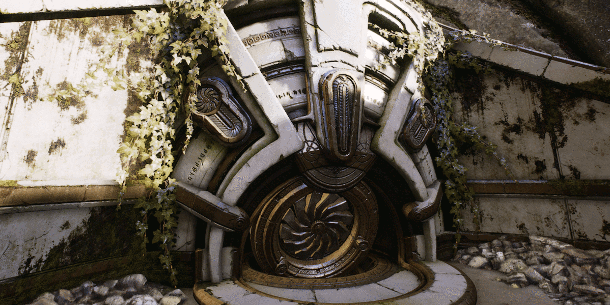Epic Games releases Unreal Engine 4.14
The announcement trailer for Robo Recall. Epic Games’ upcoming VR title makes use of Unreal Engine 4.14’s new forward render engine, with Epic claiming a 22% speed boost over the existing deferred renderer.
Epic Games has released Unreal Engine 4.14, the latest update to its game engine and dev environment, adding a forward renderer with support for MSAA, contact shadows and a new automated LOD system.
New forward renderer aimed at VR work
One key addition to Unreal 4.14 is the new forward renderer with support for both Temporal Antialiasing (TAA) and Multi-Sample Anti-Aliasing (MSAA), described by Epic as “well suited for VR”.
Epic describes it as “faster than the [existing] deferred renderer for some content”, citing a 22% speed boost in its own upcoming Robo Recall VR title when running on a Nvidia GeForce 970 GTX GPU.
Most of the performance improvement comes from default settings that reduce image quality – you can find details on Epic’s blog – but these can be disabled on a per-material basis.
There are also other limitations: while the new forward renderer supports stationary lights and unshadowed movable lights, it doesn’t support shadow-casting movable lights.
In addition, there is no support for screen-space techniques like SSR, SSAO, or contact shadows.

New contact shadow system
On which note, Unreal 4.14 also adds a new contact shadow system, designed to give sharp dynamic shadows in situations where the object casting the shadow is close to the shaded surface.
It can also be used to generate self-shadowing from the parallax occlusion mapping from lights.
Better skin shading, translucent materials and reflections
Other visual improvements include support for full-res skin shading for the Subsurface Profile shading model, which gives better lighting on fine details like pores and wrinkles than the old checkerboard system.
While support for translucency in the new forward renderer itself is limited, the deferred renderer can now make use of its forward shading functionality for improved lighting and reflections on translucent surfaces.
The way that the engine handles reflection captures has also been updated, which should result in fewer artefacts on very smooth surfaces: you can find more details on Epic’s blog.
New built-in automated LOD system
There is also a new automated Level of Detail (LOD) system that doesn’t require third-party libraries – Unreal Engine also ships with Simplygon, but you need a separate licence to use it.
Generating lower-poly LODs from a high-poly asset maintains the source mesh’s UVs, normals, tangents and vertex colors, so a set of LODs can share materials and lightmaps.
The engine also automatically calculates the optimum size at which an asset should appear on screen before switching to the next LOD, although this can be customised manually.
Currently, the new system only works with static meshes, and mesh proxy LOD generation is not supported.
Improvements to rigging and animation workflow
Riggers and animators get a range of UI and workflow changes: notably, the fact that the animation tools have been split into their own separate editors rather than being modes of a single editor.
Functionality common to each editor – as well as the Animation editor, there are separate Skeleton, Skeletal Mesh and Anim Blueprint editors – is now generally found in the viewport or Skeleton Tree.
The Animation Editor also gets a new Animation Curve window for tweaking animation curves, with a real-time preview of the results.
In addition, there is a new Morph Target View mode that shows which vertices on a mesh are affected by individual morph targets, making it easier to troubleshoot problems.
Other time-savers when iterating on rigs or animations
Other changes include a new default animation blueprint for features common to all the blueprints that will be assigned to a skeletal mesh – for example, dynamics or IK – minimising the need for duplication.
There is also a new ‘virtual bones’ system intended to allow users to change the joint hierarchy of a skeleton in-engine without the need to recreate all of the existing animations in an external DCC package.
It’s also now possible to create a child animation montage based on a parent montage, allowing users to replace animation clips while maintaining overall timing: useful for adding variants to a movement.
Updates to the VR Editor and Sequencer cinematic editor
Both the new VR Editor and Sequencer toolsets get updates: in the case of the former, it’s now possible to create terrain in VR, sculpting and painting landscape materials using motion controllers, as shown above.
Sequencer gets support for edit handles, making it possible to adjust the timing of edits without re-rendering footage; plus the option to record audio from a microphone while recording into a sequence.
The camera crane rig has also been updated to better mimic the behaviour of a physical crane.
Support for new technologies
Other changes include support for Ansel, Nvidia’s new in-game screenshot technology; and a new MIDI Device plugin, intended to enable interaction with music hardware.
In addition, Unreal Engine 4.14 now uses PhysX 3.4, the latest version of Nvidia’s real-time physics system; and supports Visual Studio 15, the latest version of Microsoft’s IDE.
There is also the usual long list of smaller features and bugfixes: you can find a run-down via the link below.
Pricing and availability
Unreal Engine 4.14 is available for 64-bit Windows 7+, Mac OS X 10.10.5+ or Linux. Use of the editor is free, but Epic takes 5% of gross beyond the first $3,000 per quarter for any product you release commercially.
